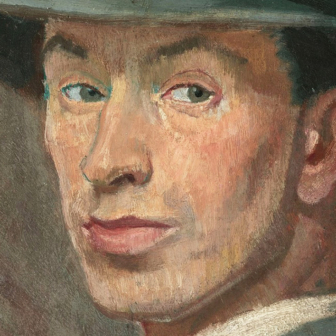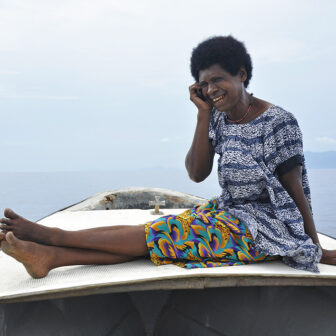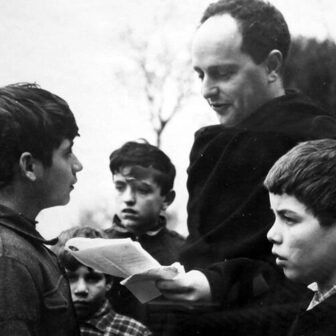Vandemonians: The Repressed History of Colonial Victoria
By Janet McCalman | The Miegunyah Press | $39.99 | 343 pages
How Australian is Jack Thompson? In 2016 SBS framed the first episode of the Australian family history series Who Do You Think You Are? with this question. Thompson’s discovery of his convict heritage secured his place as “an iconic Australian”; he was descended from “Australian royalty.”
The question “Who were the convicts?” has long been central to Australians’ sense of self, and the answer has shifted over time. The convicts have been characterised as hardened criminals best forgotten; as innnocent victims of a brutal regime; as the makers of mateship and the Australian legend. And these shifts have reflected our changing relationship with “the mother country”: as despised colonies where Britain dumped its waste; as an experiment in making a new society; and now, often, as a national success story despite the Poms.
The historian Janet McCalman has bought into this old argument with the publication of Vandemonians. “Vandemonian” was the unflattering term applied by free-born immigrants to the ex-convict men and women who came from Tasmania — Van Diemen’s Land — to Victoria in the 1840s and early 1850s. These migrants from across Bass Strait — more than 40,000 of them — have been largely ignored by other historians; as McCalman says, “they were not meant to be part of colonial Victoria.” She promises that her study will both rewrite the history of Victoria and help us to better understand “the impact of convict transportation on the making of Australia.”
Janet McCalman is one of the best Australian historians writing today. No one can equal her record as a social historian. She has found new ways to document the action of class and gender in shaping the experience of ordinary lives. Her passionate, often compassionate, concern has been to reconstruct the lives of those who have suffered history rather than made it. Her works have pioneered new methodologies and made new uses of old ones: local history, oral history, ethnographic history and, above all, prosopography, defined in McCalman’s words as “group biographies collated from diverse sources” that “can create a new picture of the past and liberate the mute in the historical record.”
The convicts have provided a rich source for prosopographical historians. The convict administration recorded every detail of their lives, and even of their appearances. We know the height and build of many convicts under sentence, their hair colour, eye colour and complexion, every scar and tattoo — and convicts had lots of tattoos. Often we know the work they were set to do each day, their behaviour on the job, their infringements of discipline and their punishments.
The ready availability of these records online — the result of pressure from family historians — has allowed historians to count and to compare. Economic historians have counted the occupations of convict men and women, and discovered that they were more skilled and more literate than those they left behind in Britain. Historians of women and family have used marriage and birth records to argue that convict women were not “damned whores” but mothers, “god’s police.”
Most recently Grace Karskens has brought together prosopography, land records and family history to write a group biography of the ex-convicts who settled before 1820 on the rich river flats of the Hawkesbury River, north of Sydney. Her prize-winning history, People of the River, explores convict family fortunes and “the people’s pleasures”: drinking, gambling, prize-fighting, horseracing. She describes a culture that was “carnivalesque, loud and often violent,” “a culture of resistance.” Her reading sits comfortably with Jack Thompson’s delight at finding that his forebear was not just Australian royalty, but a royal who owned a pub.
McCalman tells a very different story about a different “population.” Karskens’s Hawkesbury settlers were fortunate in arriving in New South Wales before 1820, when land grants and independent living were still freely available to emancipists. McCalman’s convicts were transported to Van Diemen’s Land, mostly after 1840, when the island became a vast outdoor jail. Her subjects are drawn from a massive database of all the convicts transported to Van Diemen’s Land; and then from a subset whose lives before and after sentence have been reconstructed from British and Tasmanian sources. The research team working with McCalman added more layers of biographical detail, including descendants where these existed, and in some cases following through to grandchildren and great-grandchildren who served in the Australian Imperial Force during the first world war.
McCalman’s narrative does offer an alternative history of Victoria, and a grim one. She first follows the Vandemonians to 1840s Melbourne, where many ended up living in tiny cottages in filthy, refuse-strewn lanes between Bourke and La Trobe streets. “It had taken just a decade for the new settlement of Melbourne to develop backstreet slums,” she comments. After 1850 she follows them to the goldfields around Bendigo and Ballarat. Muscles counted far more than manners on the fields, and many became briefly rich, only to blow their money on drink and celebration. Back in Melbourne they were feared as potential criminals and despised as what McCalman calls “cashed-up bogans.” “Diggers’ weddings” saw hired carriages rattling though the streets, carrying champagne-drinking diggers and their temporary brides “dressed out in the best satin, lace and flowers which Melbourne can produce!”
McCalman describes in painful detail the brothels established in the 1850s by ex-convict men and women in the slums of Melbourne, Ballarat and Bendigo, and the trade in young women that fed them. Prostitutes and pickpockets continued the trades they had practised in the port cities of England. These “unruly, unceasing offenders” were not typical of the Vandemonians, merely the most visible. Many more settled in working-class suburbs and disappeared among the local poor. These suburbs were no more healthy places to live than the city slums.
McCalman doesn’t spare her readers. In Collingwood “filth abounded: excrement of humans and animals, decomposing dead creatures, food remains, fish heads and entrails left by hawkers, all languishing in large pools of stagnant water.”
A very few of the Vandemonians — less than a score — succeeded in the conventional sense of the word, dying wealthy and respected. McCalman proposes a different criterion for success — the founding of a lineage: “a household that can nourish and protect children so that in their turn they can produce their own offspring.” Even among those Vandemonians who found a husband or wife, most seem to have failed this test. McCalman finds that her subjects started the race with a heavy handicap. They “disproportionately came from fractured families where one or both parents were dead or absent.” “Few had experienced love, security and trust” and “only a minority would succeed as mothers and fathers.”
McCalman is clear that this was as much a social failure as an individual one. She understands the national impact of convict transportation in terms of “class relationships, and the inculcation of shame and a feeling of inferiority that has always been the mental mark of being poor.” She believes that “What matters most about the Vandemonians’ story is not any Australian legend or ‘hated stain,’ but the persistence of poverty over generations, of fragile families, of the silent pain of being a nobody.” There is no place for ironic references to Australian royalty here.
Vandemonians offers its readers a deeper understanding of the complexity of our convict origins, and how these still shape the nation. In times like these we need to listen to Janet McCalman. •




